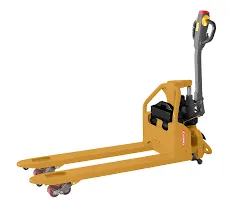


Fall Protection Devices Ensuring Safety in High-Risk Environments
In industries such as construction, maintenance, and manufacturing, the risk of falls from heights poses a significant threat to workers' safety. According to the U.S. Occupational Safety and Health Administration (OSHA), falls are one of the leading causes of workplace fatalities. To mitigate these risks, the use of fall protection devices is not only crucial but often mandated by safety regulations. This article explores the various types of fall protection devices and their importance in ensuring worker safety.
Fall protection devices can be grouped into three primary categories personal fall arrest systems (PFAS), guardrails, and safety nets
.1. Personal Fall Arrest Systems (PFAS) PFAS include harnesses, lanyards, and anchorage points designed to protect workers by stopping them from falling to the ground. When properly used, a harness should distribute the force of a fall across the body, reducing the risk of injury. Lanyards, which connect the harness to a secure anchor point, are crucial for maintaining safety while workers are on elevated surfaces. Employers must ensure that workers are trained in the correct use of these systems to maximize their effectiveness.

2. Guardrails Another critical type of fall protection device is guardrails. These are physical barriers installed along the edges of platforms, rooftops, and other elevated surfaces. Guardrails provide a simple yet effective means of preventing falls. In addition to keeping workers safe, guardrails can also help prevent accidents caused by tools or materials falling from heights, thus ensuring the safety of personnel below.
3. Safety Nets Safety nets serve as a secondary form of fall protection, capturing workers if they fall from a height. These nets are often used in conjunction with other safety measures and can be particularly effective on construction sites where there are multiple levels of elevation. Proper installation and regular inspection of safety nets are essential to ensure their reliability.
Implementing a fall protection plan that includes these devices is essential for any business that operates in high-risk environments. Regular training and education on the proper use of fall protection devices not only comply with legal requirements but also foster a culture of safety among employees.
In conclusion, fall protection devices are vital elements in safeguarding workers in various industries. By utilizing PFAS, guardrails, and safety nets, employers can significantly reduce the risk of falls and create a safer work environment, ultimately saving lives and preventing injuries. Investing in fall protection is not just a regulatory obligation; it is a moral imperative that prioritizes the well-being of every worker.



